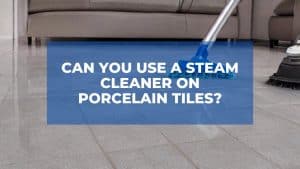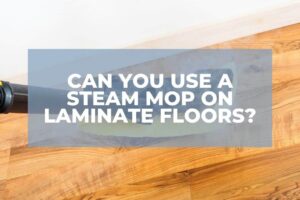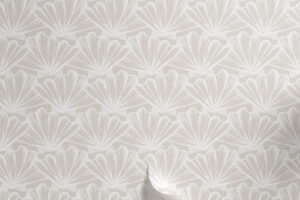Porcelain tiles look more attractive and softer than ceramic. They’re also incredibly durable and are easy to maintain, given their remarkable resistance to moisture and spills.
But to keep them in good shape, you need regular cleaning. So, when it’s time to clean, can you use a steam cleaner on porcelain tiles?
In this article, you’ll understand how safe it is to use a steam cleaner on your porcelain tile. You’ll also learn more about correctly caring for your porcelain tiles to keep them in good shape while extending their lifetime. But first, here’s your answer to the big question of today.

Quick Navigation
Can You Use a Steam Cleaner on Porcelain Tiles?
Yes, you can steam clean porcelain tiles and the grout without causing any damage. Steam cleaning sanitizes and deodorizes your porcelain flooring. It’s the best way to get rid of stubborn stains, bacteria, and microorganisms to leave streak-free.
How To Use a Steam Cleaner on Porcelain Tiles
Here’s how to use a steam cleaner on your porcelain flooring correctly. The steps described will help you achieve optimum results without causing any damage to the floor or injuries to yourself.
Step 1: Sweep or Vacuum The Floor
In this first step, the main aim is to get rid of larger pieces of dust, dirt, and food crumbs. You may use a broom to sweep them away, a vacuuming machine to suck them up, or a dust mop to eliminate the dust and dirt. The remaining surface will be easier to deal with when done correctly using the steam cleaner. But before we start steaming, we should first prepare the machine.
Step 2: Prepare The Unit
Remove the unit’s cap and fill the water reservoir with water. You may add any recommended cleaning product as asked by the manufacturer. Secondly, attach the microfiber cleaning towel to the unit’s head and plug the machine to let the water heat. When heating is done, it’s time to steam your floor.
Step 3: Do The Steaming
Squeeze the trigger or pump the machine’s handle to release steam through the microfiber cloth. Move the steam cleaner all over the floor in a pattern. Cover all areas and ensure that you allow more contact time over areas that are deeply soiled than others. Repeat the same process if your machine runs out of water until the whole floor is done.
Step 4: Vacuum The Tiles Again
Vacuum the steamed tiles again to remove any remaining large particles and loosened dirt. The steam cleaner usually loosens dirt and may fail to pick them up. A vacuum cleaner will help you pick everything up.
Step 5: Leave The Floor To Dry
Allow the floor some time to dry before starting to use it again. You can open all windows to allow proper air circulation, turn on your ceiling and portable fans to enhance drying, or use other machines like an air conditioner or blow dryer.
What Are The Advantages of Steam Cleaning Porcelain Tiles?
- Steam cleaning uses clean water only. That means you no longer have to deal with the negative effects of harsh chemicals on your children and pets. You’ll also say goodbye to doors and sticky floors.
- The hot, high-pressure steam removes sticky residues and dirt left by chemicals. It also kills 99% of bacteria and molds, exterminates viruses, and deodorizes the porcelain floor.
- The method is less expensive than chemicals in the long run. That is, you don’t have to buy anything else apart from the unit itself.
- Steam cleaning is safe for porcelain tiles. There’s no need to fret over the tiles getting cracked or destroyed in any way due to high temperatures. Porcelain is highly resistant to heat, and so is grout.
What Are Other Great Ways to Clean Porcelain Tiles?
1. Mopping the Tiles
What You Need:
- Water
- Sponge Mop
- Bucket
- All-purpose House Cleaner
- Vacuum Cleaner
The Steps:
- Vacuum the floor to get rid of any loose debris and dirt.
- Apply the all-purpose house cleaner with hot water to the floor and let it rest for about 10 minutes.
- Scrub the floor with a sponge mop to remove stains, grime, and dirt.
- Remove the dirty water and dirt from your floor using a wet vacuum – or soak the solution using large towels.
- Rinse the floor using clear water and dry it again using the method in step 4.
- Allow the floor to further dry by opening windows, turning on fans, and using an air conditioner.
2. Dry-cleaning The Porcelain Tiles
Dry cleaning is the simplest way to clean porcelain tile floors. All you need is a vacuum cleaner or dust mop. The simple process is as follows:
- Step 1: If you’re using a vacuum cleaner, start by removing the beater bar. Start from step 2 if you’re using a dust mop.
- Step 2: Sweep or clean the wall edges of the floor and beneath cabinets. Do it in sections to avoid skipping any area.
- Step 3: Move all the loose dirt to one corner and collect them after cleaning.
How Often Should I Clean My Porcelain Flooring?
The number of times you should clean your porcelain tiles depends on your flooring traffic and level of grubbiness. Floors used by many people and pets regularly should be cleaned daily or a few times a week, depending on how grimy it gets. Meanwhile, we recommend daily vacuuming and weekly steaming.
Tips to Keep Your Porcelain Tiles Clean For a Long Time
- Sweeping and vacuuming are the best methods for regular cleaning of porcelain tiles. You may also mop the floor lightly using water and mild detergent.
- Do not let any cleaning solution dry on the porcelain tiles as it may cause staining and streaking.
- You can prevent staining by getting rid of spills as soon as they occur.
- Remember to comply with all steam cleaner manufacturer’s instructions while using the unit.
- Do not steam clean the floor daily but rather weekly or once I’m a fortnight.
- If you’re using any cleaning solution, ensure that you do a spot test on a small section of the floor to see if it may cause any damage.
The Bottom Line
Steam cleaning porcelain tiles each week is the best way to remove stubborn stains, bacteria, and dust. It’s an eco-friendly method that is less expensive but more efficient than chemicals. Use our recommended cleaning steps above, and you’ll achieve the best results. Good luck!


